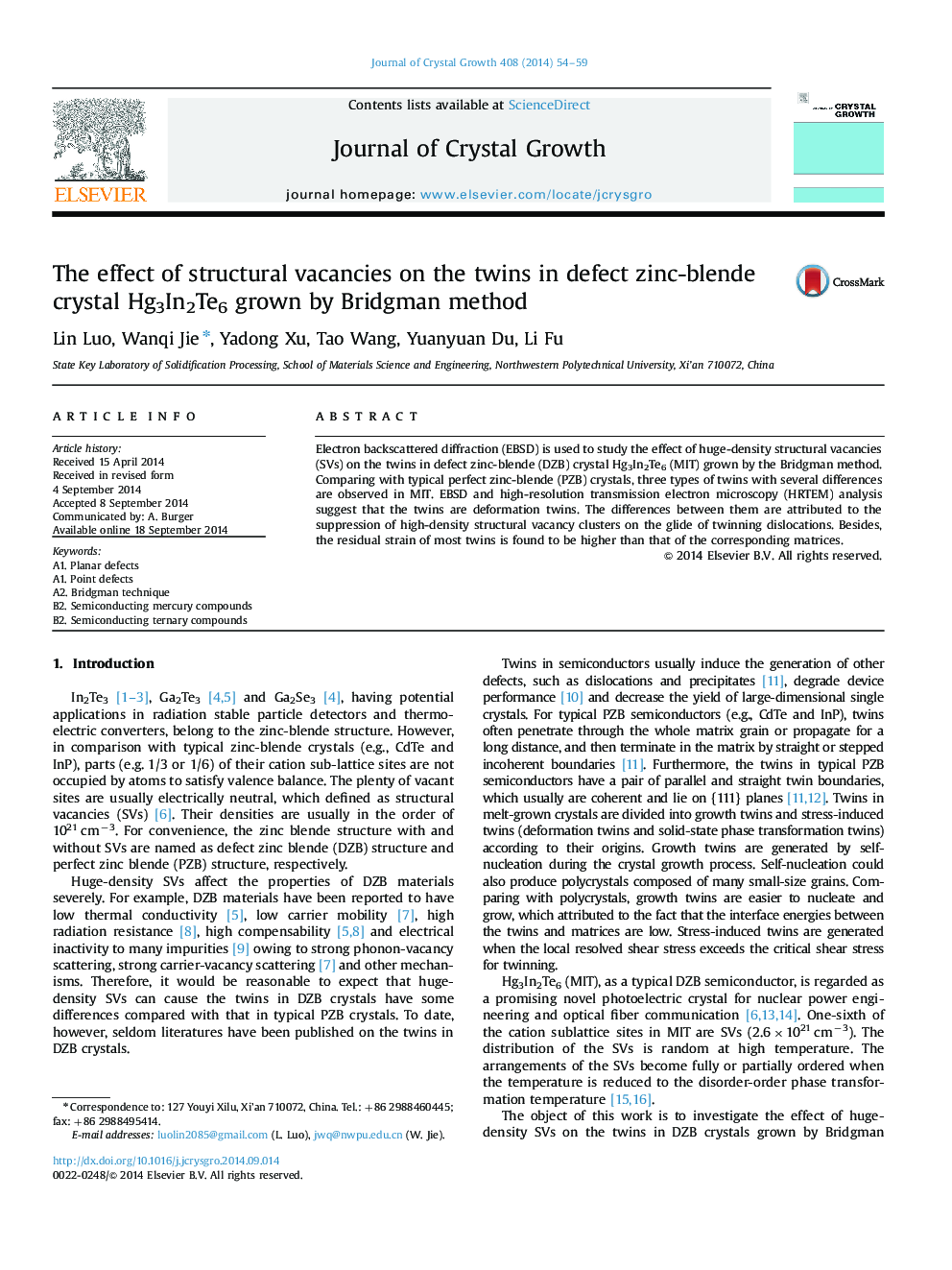| Article ID | Journal | Published Year | Pages | File Type |
|---|---|---|---|---|
| 8150635 | Journal of Crystal Growth | 2014 | 6 Pages |
Abstract
Electron backscattered diffraction (EBSD) is used to study the effect of huge-density structural vacancies (SVs) on the twins in defect zinc-blende (DZB) crystal Hg3In2Te6 (MIT) grown by the Bridgman method. Comparing with typical perfect zinc-blende (PZB) crystals, three types of twins with several differences are observed in MIT. EBSD and high-resolution transmission electron microscopy (HRTEM) analysis suggest that the twins are deformation twins. The differences between them are attributed to the suppression of high-density structural vacancy clusters on the glide of twinning dislocations. Besides, the residual strain of most twins is found to be higher than that of the corresponding matrices.
Keywords
Related Topics
Physical Sciences and Engineering
Physics and Astronomy
Condensed Matter Physics
Authors
Lin Luo, Wanqi Jie, Yadong Xu, Tao Wang, Yuanyuan Du, Li Fu,
